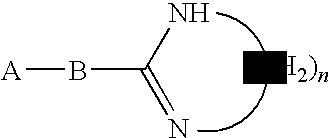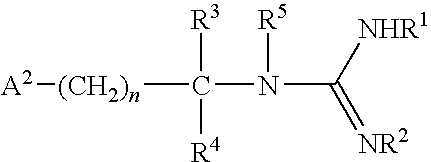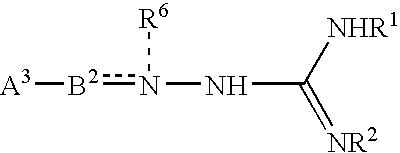Compositions and methods of treatment of sympathetically maintained pain
a technology of sympathetically maintained pain and compositions, applied in the direction of drug compositions, biocide, heterocyclic compound active ingredients, etc., can solve the problems of labsg and ivrb being subject to false negatives, carries with it a degree of risk, side effects and discomfort,
- Summary
- Abstract
- Description
- Claims
- Application Information
AI Technical Summary
Problems solved by technology
Method used
Image
Examples
example 1
Demonstration of Effectiveness of Intravenous Administration of Blocking Agent
[0109]If peripheral α-adrenergic receptors are blocked completely, skin temperature would approach core temperature. Such a blockage would produce profound hypotension and a reflex tachycardia. Therefore, a cumulative dose of phentolamine was selected such that the heart rate did not exceed 150 beats per minute and the effects on blood pressure were mild. This dose ranged from 35 mg to 45 mg over a 30 minute period. Preliminary studies suggested that this amount of phentolamine effectively relieved pain in patients with SMP.
[0110]The heart rate, systolic and diastolic blood pressure changes produced by phentolamine in a typical patient were relatively mild. In the first seven patients phentolamine alone was administered. The heart rate increased moderately. In subsequent sessions, patients pretreated with propranolol 1-2 mg showed minimal increase in pulse rate. Blood pressure was little effected regardles...
example 2
Topical Administration of Clonidine for Relief of SMP
[0123]A patient with a sciatic nerve injury was diagnosed as having SMP, based on lumbar sympathetic blockage. The patient had ongoing pain and intense hyperalgesia to both mechanical and cold stimuli in the painful zone. Clonidine was applied to the hyperalgesic zone transdermally via a 7.0 or 10.5 cm2 patch (Catapres-TTS; Boehringer). These patches deliver 0.2 mg or 0.3 mg of clonidine / day for 7 days. A series of 6 patches were applied consecutively to different sites and each left in place for 2-10 days. Prior to, during, and post drug application, the heart rate and blood pressure were taken and sensory testing performed. Pain evoked by mechanical and cold stimuli was rated on a scale from 0-10.
[0124]Complete relief of hyperalgesia in the skin underlying the patch was achieved from each clonidinepatch. There were no adverse side effects or changes in cardiovascular parameters. The skin surrounding the patch remained hyperalges...
example 3
Topical Administration of Clonidine Compared with Topical Administration of Clonidine followed by Intradermal Injections of α-Adrenergic Agonists
Methods
[0125]Patient Selection and Control Subjects: Six normotensive patients with chronic ongoing pain and cutaneous hyperalgesia to mechanical and cooling stimuli following soft tissue or nerve trauma were examined. All patients had previously undergone sympathetic blocks (i.e., local anesthetic blockade of the appropriate sympathetic ganglia) to assess the involvement of the sympathetic nerves in their pain state. Additionally, in all but one patient (case 2) a systemic α-adrenergic block was performed via intravenous administration of phentolamine. Four of the six patients (cases 1-4) experienced 70-100% pain relief following the blocks and were considered to have SMP. The remaining two patients, (cases 5, 6) were considered to have sympathetically-independent pain (SIP) since their pain was not affected by local anesthetic sympathetic...
PUM
| Property | Measurement | Unit |
|---|---|---|
| diameter | aaaaa | aaaaa |
| weight | aaaaa | aaaaa |
| temperature | aaaaa | aaaaa |
Abstract
Description
Claims
Application Information
 Login to View More
Login to View More - R&D
- Intellectual Property
- Life Sciences
- Materials
- Tech Scout
- Unparalleled Data Quality
- Higher Quality Content
- 60% Fewer Hallucinations
Browse by: Latest US Patents, China's latest patents, Technical Efficacy Thesaurus, Application Domain, Technology Topic, Popular Technical Reports.
© 2025 PatSnap. All rights reserved.Legal|Privacy policy|Modern Slavery Act Transparency Statement|Sitemap|About US| Contact US: help@patsnap.com



